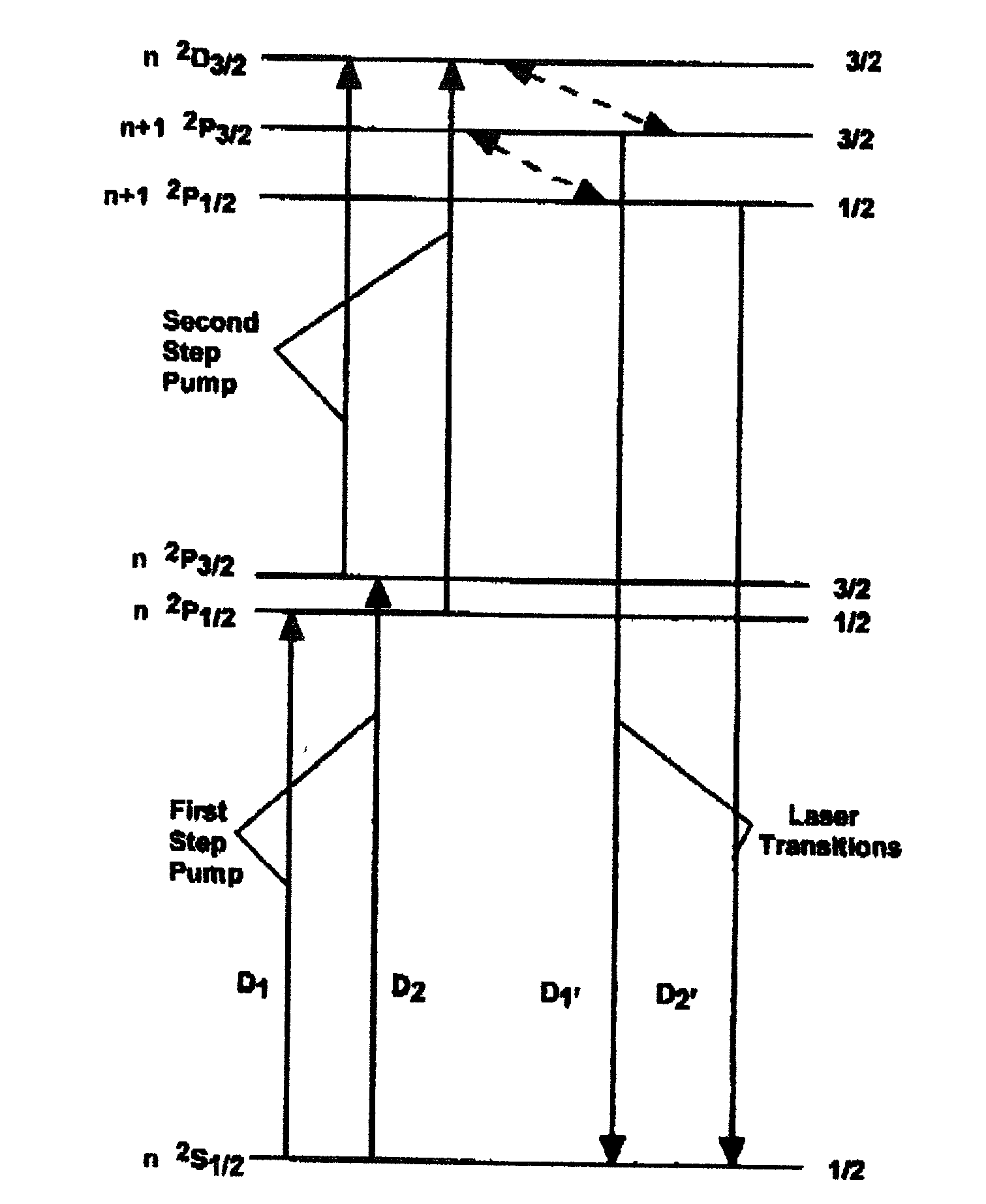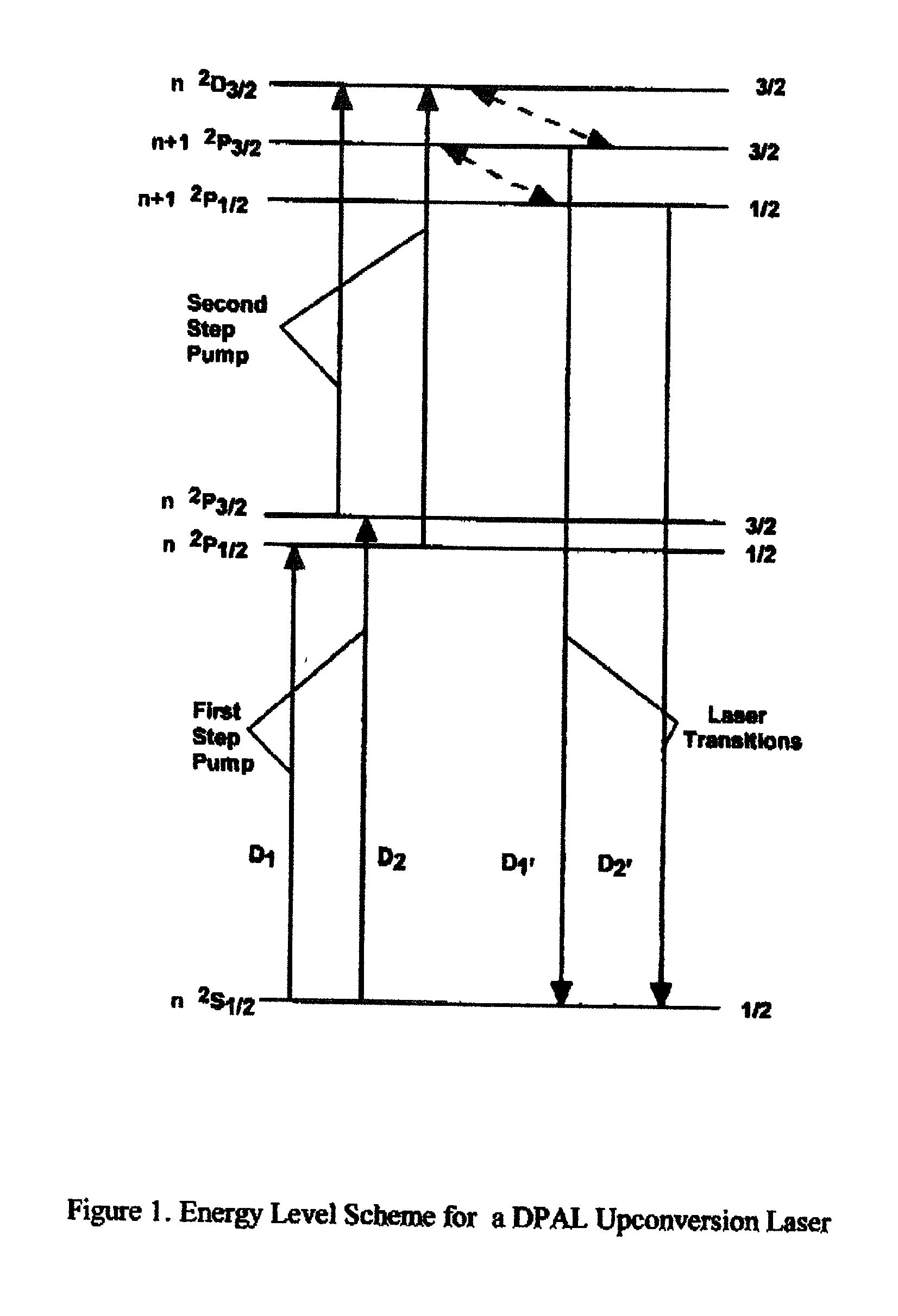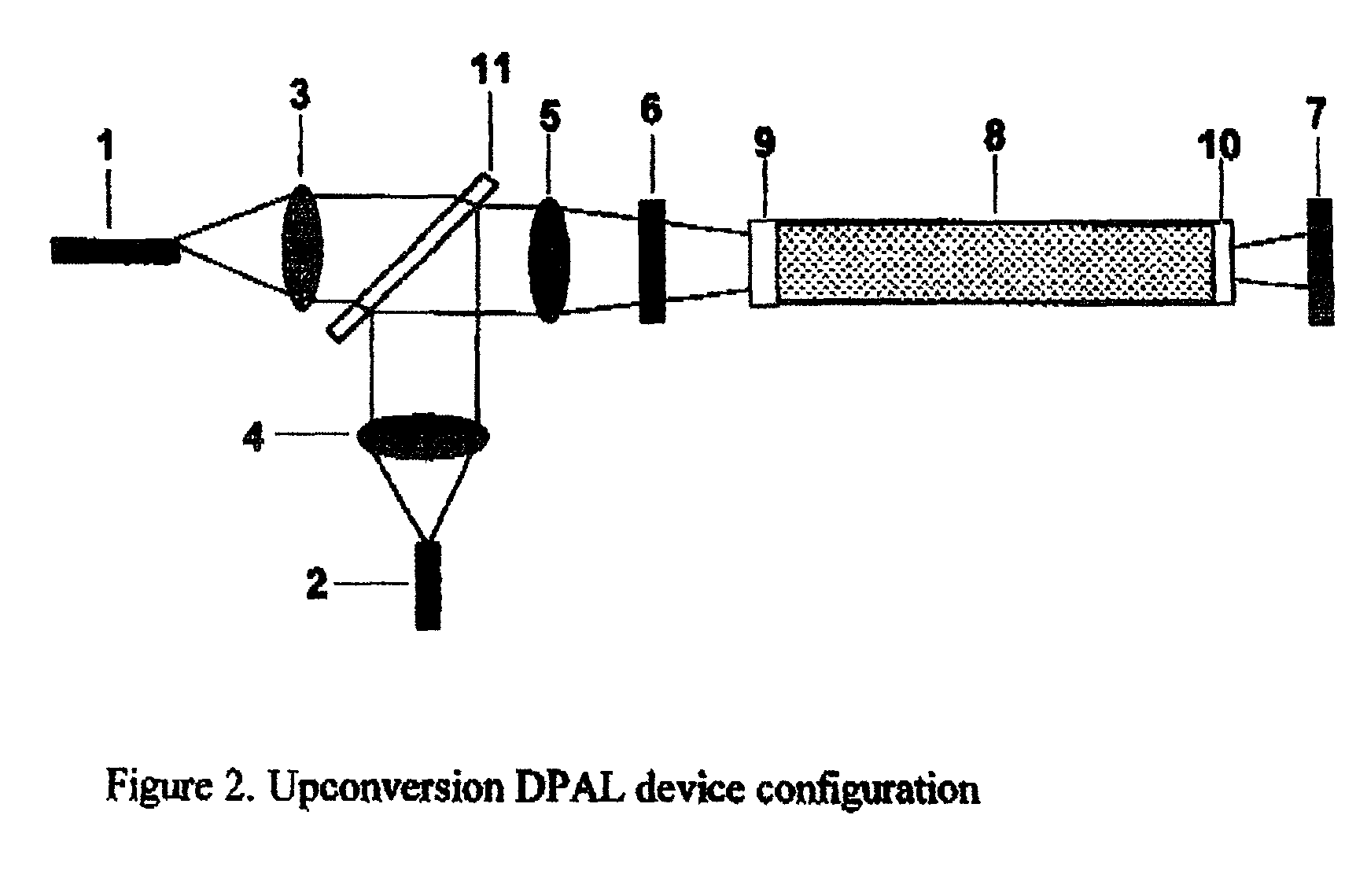Diode-pumped visible wavelength alkali laser
a laser and visible wavelength technology, applied in the direction of laser details, active medium materials, optical resonator shape and construction, etc., can solve the problems of large amount of waste heat, inefficient production of useful visible, and general limitation of the brightness of arc lamps, and achieve the effect of powerful laser operation and efficient brightness
- Summary
- Abstract
- Description
- Claims
- Application Information
AI Technical Summary
Benefits of technology
Problems solved by technology
Method used
Image
Examples
Embodiment Construction
[0024] The energy level scheme for the up-conversion DPAL (or UC-DPAL) is shown in FIG. 1. In the basic infrared DPAL [10], only the ground and first two excited energy levels are involved in laser action. In the UC-DPAL device, additional higher lying electronic levels are involved in generating visible laser emission. In FIG. 1, n is the principal quantum number of the alkali atoms (n=2,3,4,5,6 for lithium, sodium, potassium, rubidium, and cesium, respectively). In the UC-DPAL device, two diode pump sources are utilized. The first pump, P.sub.1, is set to the wavelength of either of the first resonance (so-called) D.sub.1 or D.sub.2 transition wavelengths (D.sub.1: n .sup.2S.sub.1 / 2-n .sup.2P.sub.1 / 2, or D.sub.2: n .sup.2S.sub.1 / 2-n.sup.2P.sub.3 / 2). The second pump, P.sub.2, is set to a wavelength that equals the wavelength of a transition between either the n .sup.2P.sub.1 / 2 level or the n .sup.2P.sub.3 / 2 level, and the n .sup.2D.sub.3 / 2 level (or possibly another .sup.2D.sub.J l...
PUM
 Login to View More
Login to View More Abstract
Description
Claims
Application Information
 Login to View More
Login to View More - R&D
- Intellectual Property
- Life Sciences
- Materials
- Tech Scout
- Unparalleled Data Quality
- Higher Quality Content
- 60% Fewer Hallucinations
Browse by: Latest US Patents, China's latest patents, Technical Efficacy Thesaurus, Application Domain, Technology Topic, Popular Technical Reports.
© 2025 PatSnap. All rights reserved.Legal|Privacy policy|Modern Slavery Act Transparency Statement|Sitemap|About US| Contact US: help@patsnap.com



